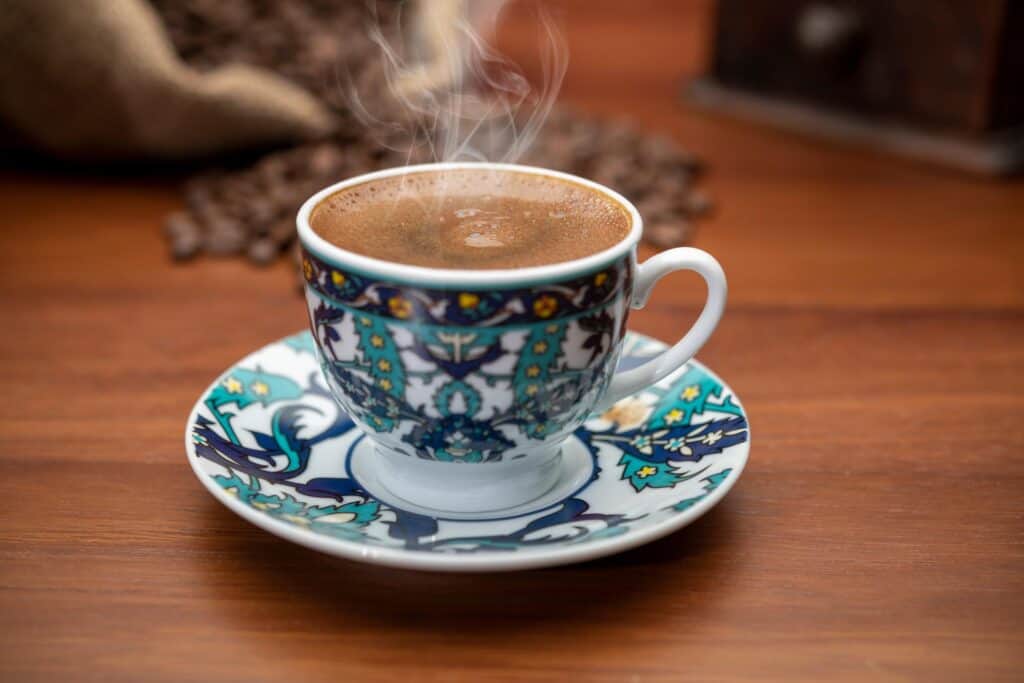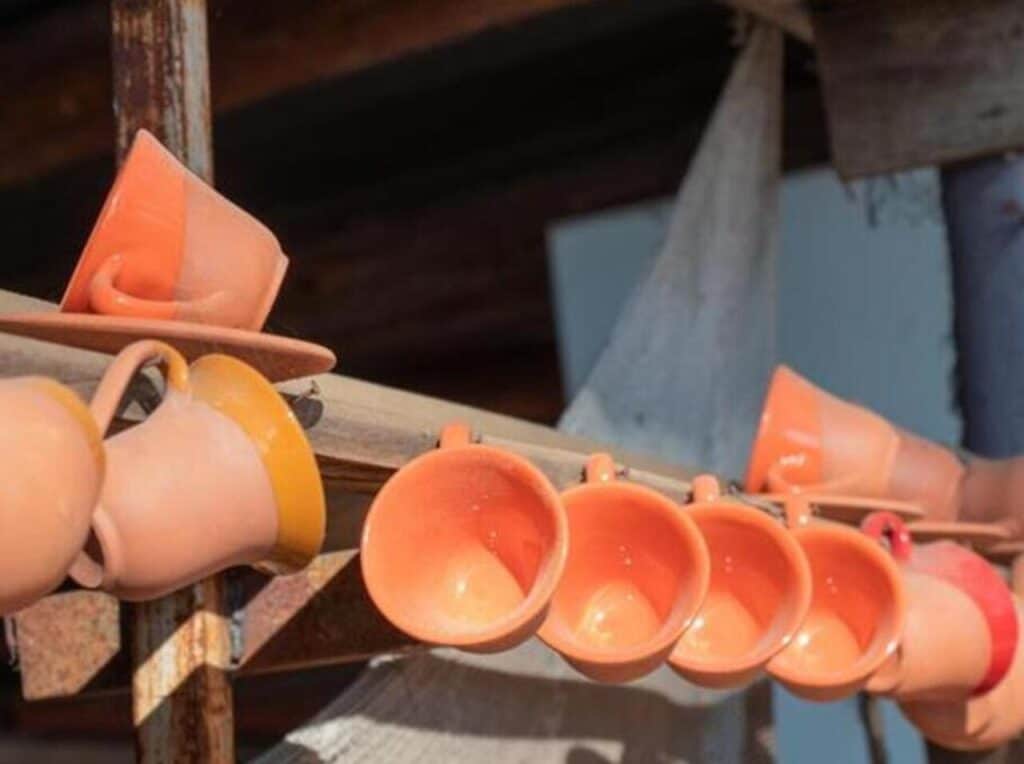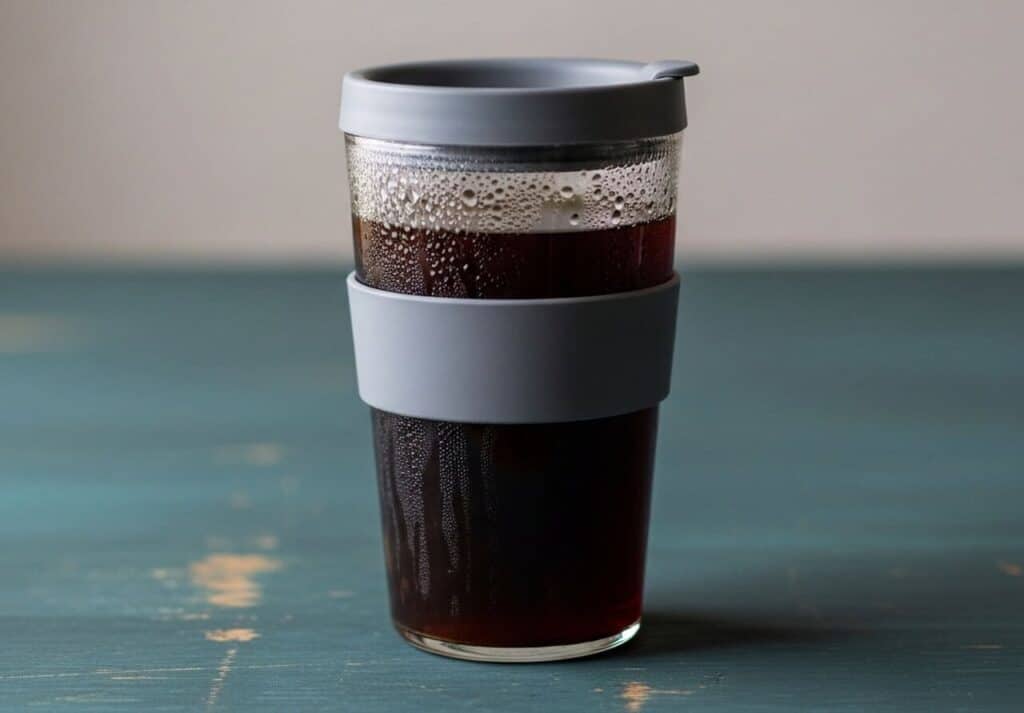We may earn money or products from the companies mentioned in this post. This means if you click on the link and purchase the item, I will receive a small commission at no extra cost to you ... you're just helping re-supply our family's travel fund.

The coffee mug has always been more than a cup. It’s a snapshot of an era- holding not just caffeine, but the moods, trends, and materials that shaped American kitchens for over a century. From heavy diner ceramics to sleek glass and stainless steel, every mug tells a small story about how people lived, worked, and connected.
What started as a utilitarian object became a cultural marker. Each decade layered new meaning industrial efficiency, suburban comfort, personal expression, and sustainability. Whether stacked in cupboards or displayed on open shelving, mugs became icons of everyday design.
This story traces how the coffee mug, in all its shapes and finishes, evolved alongside the American home and why it still feels timeless.
The Midcentury Mug: Form Meets Function

The postwar years redefined kitchen design, and the coffee mug was no exception. By the 1950s, the American kitchen had become a place of efficiency, optimism, and color. Ceramic mugs, often thick-walled and pastel-toned, mirrored the era’s fascination with durable materials and cheerful design. These mugs weren’t just for coffee they symbolized modern living.
Fire-King and the Rise of Everyday Glassware
Companies like Anchor Hocking brought glass mugs into everyday homes with Fire-King. Their jadeite green mugs, now collector favorites, were heat-resistant and affordable. More importantly, they were dishwasher-safe; a novelty that reflected America’s growing love for convenience. The mugs became part of a larger narrative about middle-class modernity and the joy of easy living.
Diner Influence and the Iconic “Heavy Mug”
Diners popularized the sturdy white ceramic mug with its thick handle and rounded lip. Designed for constant refills and long conversations, it became an American staple. Its weight gave it a certain permanence; a small but reliable comfort during the fast-changing decades that followed.
The 1970s-1980s: Earth Tones and Self-Expression

As the back-to-nature movement gained traction, the coffee mug shifted again. Handmade stoneware and rustic finishes took over suburban cupboards. The mass-produced uniformity of the 1950s gave way to mugs that looked and felt personal. Each glaze, drip, and texture seemed to carry an imprint of individuality.
The Handmade Revival
Pottery studios flourished in the 1970s, especially among those rejecting factory-made sameness. Coffee mugs became small expressions of craft. You could spot them at art fairs and college towns thick clay, muted colors, and the satisfaction of something made by hand. Drinking from one felt more grounded than polished.
The Corporate and Novelty Boom
By the 1980s, the handmade ideal collided with the corporate world. Offices filled with branded mugs and humorous slogans, signaling both identity and irony. The mug wasn’t just a cup anymore; it was a statement. Whether it read “World’s Best Boss” or carried a Garfield comic, it became a personal badge in a culture obsessed with individualism.
The Modern Mug: Sustainability and Minimalism

The new millennium brought a shift in both design and consciousness. Coffee culture exploded, fueled by cafés, baristas, and travel mugs that doubled as accessories. The modern coffee mug had to balance style with sustainability. Consumers cared about materials, ethical sourcing, and aesthetics that matched uncluttered, minimalist homes.
Stainless Steel and the On-the-Go Era
Commuter culture gave rise to the stainless steel travel mug spill-proof, double-insulated, and sleek. Companies like Contigo and Yeti turned practicality into prestige. Suddenly, mugs weren’t confined to kitchens they became extensions of lifestyle and work routines. Yet, the traditional ceramic mug never disappeared; it simply adapted to coexist with portability.
The Return to Simple Ceramics
In recent years, minimalist pottery has made a quiet comeback. Matte finishes, clean shapes, and subtle glazes dominate Instagram feeds and artisan shops. This new wave reflects a craving for calm and quality over mass production. The mug, once again, feels personal but with modern restraint rather than rustic warmth.
Why the Coffee Mug Still Matters
The coffee mug endures because it’s personal. It’s the object most of us touch first each morning and last during quiet moments at night. Its design tells the story of evolving values from utility and beauty to individuality and sustainability. No matter how trends change, the simple act of holding a mug ties us back to something steady: comfort, ritual, and reflection.
Whether chipped, sleek, handmade, or mass-produced, each mug carries a bit of American life in its curve. And that’s what makes it timeless.